Abstract
This study explored the utilisation of GeoGebra as a modelling tool to develop undergraduate engineering mathematics students’ conceptual and procedural knowledge of complex numbers. This mission was accomplished by implementing GeoGebra-enriched activities, which provided carefully designed representational support to mediate between students’ initially developed conceptual and procedural knowledge gains. The rectangular and polar forms of the complex number were connected and merged using GeoGebra’s computer algebra systems and dynamic geometric systems platforms. Despite the centrality of complex numbers to the undergraduate mathematics curriculum, students tend to experience conceptual and procedural obstacles in mathematics-dependent physics engineering topics such as mechanical vector analysis and electric-circuit theory. The study adopted an exploratory sequential mixed methods design and involved purposively selected first-year engineering mathematics students at a South African university. The constructivist approach and Realistic Mathematical Education underpinned the empirical investigation. Data were collected from students’ scripts. Implementing GeoGebra-enriched activities and providing carefully designed representational support sought to enhance students’ conceptual and procedural knowledge of complex numbers and problem representational competence. The intervention additionally helped students to conceptualise and visualise a complex rectangular number. Implications for technology-enhanced pedagogy are discussed.
Contribution: The article provides exploratory insights into the development of undergraduate engineering mathematics students’ conceptual and procedural knowledge of complex numbers using GeoGebra as a dynamic digital tool. Key findings from the study demonstrated that GeoGebra appears to be an effective modelling tool that can be harnessed to demystify the complexity of mathematics students’ conceptual and procedural knowledge of complex numbers.
Keywords: complex numbers; conceptual knowledge; procedural knowledge; GeoGebra.
Introduction
The complex number system (C) is the extension of the real number system (R) to include imaginary numbers. Complex numbers were initially introduced to solve polynomial equations with no solutions in R like x2 + 1 = 0. However, they are now essential in learning post-school mathematics-dependent topics in engineering physics courses (Smith et al., 2019), mechanical vector analysis (Bird, 2017), and electric-circuit theory (Bird, 2017; Norlander & Norlander, 2012). A complex number is any number that can be written in rectangular form as z = a + bj where a and b are the real and imaginary parts, and  (i.e. j2 = −1). While many mathematicians, GeoGebra, and researchers use i, this article opted for j instead as it is referred to by engineering students where i is reserved for electrical currents. One can plot a complex number on the ordinary Cartesian plane and obtain a useful geometrical representation z = rcosθ + rjsinθ = r (cosθ + jsinθ) = (r; θ), called the polar form (see Figure 1). r and θ (measured in degrees or radians) are the modulus and the argument. (i.e. j2 = −1). While many mathematicians, GeoGebra, and researchers use i, this article opted for j instead as it is referred to by engineering students where i is reserved for electrical currents. One can plot a complex number on the ordinary Cartesian plane and obtain a useful geometrical representation z = rcosθ + rjsinθ = r (cosθ + jsinθ) = (r; θ), called the polar form (see Figure 1). r and θ (measured in degrees or radians) are the modulus and the argument.
 |
FIGURE 1: The link between a complex number representation’s rectangular and polar forms. |
|
A complex number can also be expressed in exponential form z = rejθ (θ measured in radians only). Therefore, a complex number has three forms: rectangular (Cartesian), polar (trigonometric), and exponential. θ and r are the same for both polar and exponential forms (Bird, 2017), and for this article, the polar and exponential forms have the same geometric but different algebraic representations.
Complex numbers’ multiple forms and representations are equally essential and intertwine algebraic, trigonometric, and exponential functions. Therefore, students must understand how to navigate within and among the three forms. Lesh et al. (1987) argue that besides recognising and reconstructing the same mathematical concept using multiple representations, one should be able to manipulate each representation or form and transition flexibly between them. For Even (1998), conceptual and procedural understanding of a concept can be enhanced by identifying, representing, connecting, and intertwining its multiple representations. Furthermore, Haapasalo (2003) argues that using dynamic mathematical tools to link and connect multiple concept representations can significantly enhance conceptual understanding. In view of these practical considerations, this article harnessed a dynamic mathematical tool to represent, link, and connect the multiple representations of complex numbers to enhance students’ conceptual and procedural understanding of the complex number construct. However, for students to be competent to relate, connect, link, and move seamlessly within and between complex number forms, they must be proficient in their arithmetic skills and possess deep knowledge of algebraic, trigonometric, and exponential functions. Many undergraduate engineering students’ mathematical content knowledge and arithmetic skills of complex number-related topics often fall short. However, these contributory topics are covered in Grades 10–12 in South Africa as required by the Curriculum and Assessment Policy Statement (CAPS) for Mathematics in the Further Education and Training (FET) Phase (Department of Basic Education [DBE], 2011). Ahmad and Shahrill (2012) also highlight students’ deficient algebraic skills in complex number-related topics.
Furthermore, many studies at various educational levels reveal that students need help with conceptual and procedural knowledge of complex numbers (Ahmad & Shahrill, 2012; Conner et al., 2007; Smith et al., 2015). A study by Hui and Lam (2013) revealed that many students need clarification on geometrical and algebraic representations of complex numbers. In a similar vein, Panaoura et al. (2006) observed that most students approach algebraic and geometric representations of complex numbers from fundamentally different perspectives and consider the two representations as separate and autonomous. Similarly, Haapasalo (2003) postulates that conceptual and procedural understanding of a concept, which many students continue to display in complex numbers (Ahmad & Shahrill, 2012; Conner et al., 2007; Smith et al., 2015), can be enhanced by connecting and intertwining its multiple representations using a dynamic mathematics tool. It is against this background that the study harnessed the visualisation affordances of GeoGebra to facilitate multiple representations (Karakok et al., 2014; Kin, 2018) to meaningfully link, connect or merge the rectangular and polar forms of complex numbers. GeoGebra is an open-source software that combines computer algebra system (CAS) and dynamic geometry system (DGS) affordances, making it a multi-platform and dynamic mathematics software (Hohenwarter & Fuchs, 2004). GeoGebra’s unique combination of CAS and DGS into a single mathematical software package makes it an excellent tool to teach a multi-representational topic like complex numbers1. One can type the complex number’s rectangular form in the CAS platform and view its equivalent polar representation in the DGS platform, resembling the Argand diagram or vice versa. This affordance of GeoGebra enables viewing, linking, connecting, merging, and concurrent teaching of complex numbers’ rectangular and polar forms. The International Society for Technology in Education (ISTE) (2020) also recommends using digital and technological mathematical tools to improve the teaching and learning of mathematics in various educational settings. The intertwinement, level, and guided reinvention principles of Realistic Mathematical Education (RME), the Theory of Instrumental Orchestration (TIO), and the Theory of Instrumental Genesis (TIG) guided this study.
Research problem
Despite the centrality of complex numbers to post-school mathematics-dependent topics in engineering physics courses (Smith et al., 2019), mechanical vector analysis (Bird, 2017) and electric-circuit theory (Bird, 2017; Norlander & Norlander, 2012), students at these educational levels continue to display conceptual and procedural difficulties associated with complex numbers (Ahmad & Shahrill, 2012; Conner et al., 2007; Norlander & Norlander, 2012; Panaoura et al., 2006; Ramaila & Seloane, 2018; Smith et al., 2015, 2019). Ahmad and Shahrill (2012) observed, for example, that most students have difficulty comprehending  as as  , that is, , that is,  , with , with  . Conner et al. (2007) also found that teachers’ conceptual understanding of complex numbers does not go beyond the symbol j. Some students even doubt the legitimacy of complex numbers. . Conner et al. (2007) also found that teachers’ conceptual understanding of complex numbers does not go beyond the symbol j. Some students even doubt the legitimacy of complex numbers.
Many students need clarification on different forms and representations of complex numbers (Hui & Lam, 2013). Some students consider forms and representations of complex numbers as separate and autonomous (Panaoura et al., 2006). To address the highlighted knowledge gaps, this study exploited and harnessed GeoGebra’s visual and multi-representational affordances (Karakok et al., 2014; Kin, 2018). More specifically, DGS and CAS properties of GeoGebra were used to link, connect, and merge the two forms of the complex number to enhance students’ conceptual knowledge. One should be able to transition from one form of representation to the other when necessary, as the two forms are equivalent. The study anticipates that participation in GeoGebra-facilitated activities can enable students to (1) easily navigate within and between the various forms and representations of complex numbers, (2) convert comfortably and flexibly between different forms of representation, and (3) effectively use the most appropriate form of representation for a given task.
Given the articulated research problem, the study is accordingly premised on the following research questions: (1) How can GeoGebra be harnessed as a modelling tool to develop undergraduate engineering mathematics students’ conceptual and procedural knowledge of complex numbers? (2) How effective is GeoGebra in improving undergraduate engineering mathematics students’ overall academic achievements in problem-solving tasks involving complex numbers?
Purpose of the study
The study explored the affordances of GeoGebra as a modelling tool to develop undergraduate engineering mathematics students’ conceptual and procedural knowledge of complex numbers. The following objectives underpinned the empirical investigation:
- To develop undergraduate engineering mathematics students’ conceptual and procedural knowledge of complex numbers.
- To develop undergraduate engineering mathematics students’ problem representational competence in complex numbers.
- To explore the effectiveness of GeoGebra-enriched activities on undergraduate engineering mathematics students’ academic achievement in complex numbers tasks.
Literature review
Research on the teaching of complex numbers
There is a paucity of studies on the teaching and learning of complex numbers; therefore, there is a need for more studies on them. Norlander and Norlander (2012) classified students’ responses on complex numbers into four categories: (1) mathematical artifice, (2) a two-dimensional view, (3) a symbolic view, and (4) the mystery view or an ungraspable mystery. Responses in the mathematical artifice category showed that students view complex numbers as manufactured artifices. Responses in the two-dimensional view category showed that students conceived a complex number as two separate entities instead of one unified entity. Responses in the symbolic view category showed that students associated a complex number with the symbol j. Responses in the mystery view or an ungraspable mystery category showed that students attached their attitudes or emotions and (mis)conceived a complex number as difficult, tricky, complicated, abstract, and obstructing meaningful learning. In view of these findings, Norlander and Norlander (2012) recommended an innovative visual approach to teaching complex numbers.
Ramaila and Seloane (2018) showed that only 33% (23 out of 70) of undergraduate engineering mathematics students at a South African university could correctly identify, convert, and simplify an expression containing multiple forms of representations, like  , and leave their answers in rectangular form. Furthermore, Ramaila and Seloane found that students needed help to navigate between different forms of complex number representation. In response to this predicament, the authors recommended the implementation of innovative remedial interventions to enhance students’ understanding of complex numbers. Panaoura et al. (2006) showed that students struggle with conceptual and procedural knowledge of complex numbers. In particular, the study showed that students have difficulty visualising connections and identifying, converting, and using the most appropriate forms of complex number representation. The students’ connected conception of a complex number’s algebraic and geometric forms of representation enables them to identify and consistently use or switch to the most appropriate form of representation (Smith et al., 2019). , and leave their answers in rectangular form. Furthermore, Ramaila and Seloane found that students needed help to navigate between different forms of complex number representation. In response to this predicament, the authors recommended the implementation of innovative remedial interventions to enhance students’ understanding of complex numbers. Panaoura et al. (2006) showed that students struggle with conceptual and procedural knowledge of complex numbers. In particular, the study showed that students have difficulty visualising connections and identifying, converting, and using the most appropriate forms of complex number representation. The students’ connected conception of a complex number’s algebraic and geometric forms of representation enables them to identify and consistently use or switch to the most appropriate form of representation (Smith et al., 2019).
The assertion by Veith and Bitzenbauer (2021) that the equation  is contradictory is true. The equation needs to be corrected. The authors used the property is contradictory is true. The equation needs to be corrected. The authors used the property  of non-negative real numbers on negative real numbers to argue that of non-negative real numbers on negative real numbers to argue that  , and hence there is no contradiction, as postulated by them as , and hence there is no contradiction, as postulated by them as  . Kin Eng and Fui Fong (2020) maintain that these properties are valid in the subset (i.e. real numbers) but are not valid in the corresponding superset (i.e. complex numbers). Misconceptions arising from real numbers contexts can hinder meaningful and coherent learning of complex numbers. To address these misconceptions, Kin Eng and Fui Fong recommend the design and implementation of effective instructional interventions. . Kin Eng and Fui Fong (2020) maintain that these properties are valid in the subset (i.e. real numbers) but are not valid in the corresponding superset (i.e. complex numbers). Misconceptions arising from real numbers contexts can hinder meaningful and coherent learning of complex numbers. To address these misconceptions, Kin Eng and Fui Fong recommend the design and implementation of effective instructional interventions.
This empirical study focuses on the efficacy of GeoGebra as a mathematical teaching tool, focusing on: (1) the enhancement of students’ conceptual knowledge by connecting, linking, reifying, and merging the different forms of complex numbers and (2) the improvement of students’ overall achievements on complex numbers tasks. It is for this reason that this study lessened the abstraction of complex numbers by exploring the visualisation and multi-representational affordances of GeoGebra as a modelling tool.
Conceptual and procedural knowledge
Hiebert and Lefevre (1986) define conceptual knowledge as a network of knowledge-rich relationships that cannot exist as an isolated piece of information. They view conceptual knowledge as an integrated and functional grasp of mathematical ideas. Conceptual knowledge also refers to knowledge of the underlying relationships and interconnections of ideas that explain and give meaning to mathematical concepts attained through self-discovery (Baroody et al., 2007; Eisenhart et al., 1993; Star, 2005). Rittle-Johnson et al. (2001) define conceptual knowledge, similarly, as an implicit or explicit understanding of a domain’s principles and the interrelations between them. Conceptual knowledge can be enhanced by using dynamic mathematical tools to connect and link a concept’s multiple forms of representation (Haapasalo, 2003). On the other hand, procedural knowledge refers to the knowledge of the format, syntax, rules, and algorithms used to complete mathematical tasks (Baroody et al., 2007; Eisenhart et al., 1993; Star, 2005). In a sense, procedural knowledge is the competence to carry out a mathematical task, the know-how of mathematics but not necessarily the know-why (Baroody et al., 2007; Eisenhart et al., 1993; Star, 2005). Hiebert and Lefevre (1986) argue that procedural knowledge is usually taught through drill and practice and can be automated to rapidly, flexibly, accurately, and efficiently carry out specific mathematical tasks.
In this study, students shall be deemed to have attained conceptual and procedural understanding of a complex number if they: (1) implicitly show an understanding that a complex number is one coherent mathematical entity expressible in three different representations, (2) know how the forms and representations are interconnected and can further reconstruct each, and (3) can convert or move seamlessly within and between the forms of representation where appropriate. There are many and sometimes polarised theoretical viewpoints on the existence or non-existence of the relationship between conceptual and procedural knowledge which one must be taught first. Gelman and Williams (1998) posit that children first learn concepts through intuitive explanation and build procedural skills later. In contrast, Siegler and Stern (1998) assert that children first learn procedures through explorative behaviour and abstract later. Haapasalo and Kadjievich (2000) posit that the two pieces of knowledge are related only on a terminological level, whereas other researchers assert that conceptual and procedural knowledge relate and interact symmetrically or asymmetrically with each other and complement each other. They should therefore be taught together in a balanced manner for meaningful learning of any mathematics topic (Hurrell, 2021; Luneta & Makonye, 2010; Rittle-Johnson et al., 2001; Star, 2005). The schematic representation further informs this study of the iterative model proposed by Rittle-Johnson et al. (2001), depicted in Figure 2.
 |
FIGURE 2: Iterative model for the development of conceptual and procedural knowledge. |
|
Rittle-Johnson et al. (2001) postulate that appropriate problem representations mediate students’ initial conceptual knowledge and procedural knowledge gains. The two pieces of knowledge develop iteratively and bi-directionally in any order, strengthening each other, and are all essential for competency in the domain. A good problem representation is a mediating factor between conceptual and procedural knowledge.
Hallet et al. (2010) identified five clusters of students: those with: (1) lower procedural knowledge and conceptual knowledge close to the mean, (2) lower conceptual knowledge and slightly above mean procedural knowledge, (3) higher procedural knowledge and lower conceptual knowledge, (4) higher conceptual and lower procedural knowledge, and (5) higher conceptual and higher procedural knowledge. Students with higher conceptual and higher procedural knowledge academically outperformed the other four clusters (by leveraging on both forms), followed by those with higher conceptual and lower procedural knowledge. Third were those with higher procedural but lower conceptual, fourth were those with lower conceptual and slightly above mean procedural and last were those with insufficient procedural and conceptual knowledge close to the mean.
On the basis of these findings, Hallet et al. (2010) suggested that students’ conceptual and procedural knowledge development varies depending on various factors, including individual differences, and students use this knowledge differently. The authors further suggested that contrary to earlier findings – concepts first (Gelman & Williams, 1998), procedures first (Siegler & Stern, 1998), and conceptual and procedural learning in tandem (Rittle-Johnson et al., 2001) – conceptual and procedural are unrelated (Haapasalo & Kadjievich, 2000) and are well accommodated in the clusters depending on participants that dominate the cluster.
The role of GeoGebra as a modelling tool
This study focused on the effect of GeoGebra-enriched activities on undergraduate engineering mathematics students’ conceptual and procedural knowledge of complex numbers. Research at various educational levels found GeoGebra to be effective in the development of students’ conceptual and procedural knowledge of many mathematics topics such as calculus (Oscal, 2017), functions (Zulnaidi & Zamri, 2016), fractions (Bulut et al., 2016; Poon, 2018; Supriadi et al., 2014; Thambi & Eu, 2013), circle theorems (Tay & Mensah-Wonkyi, 2018), and statistics (Phan-Yamada & Man, 2018). Karakok et al. (2014) exploited GeoGebra’s multi-representational and visual affordances to develop teachers’ conceptual understanding of complex numbers in a professional development programme (PDP). The results showed a varying conceptual knowledge of complex numbers’ different forms (rectangular, polar, and exponential forms) depending on the teacher’s teaching experience and not a conceptual understanding of complex numbers. In addition, it was further found that GeoGebra allowed teachers to intentionally manipulate one independent representation while observing and engaging simultaneously with the resulting dynamic changes in the dependent representation. In support of these findings, Shadaan and Eu (2013) concluded that GeoGebra allows students to self-discover, inquire, engage physically, interact, and collaborate. Furthermore, Dikovic (2009) found that GeoGebra helped students to gain positive knowledge and investigation and exploration skills through self-discovery while encouraging interaction, cooperation, and collaboration. A study conducted by Tay and Mensah-Wonkyi (2018) revealed that students believed that GeoGebra makes lessons more engaging, practical, and easy to understand, thereby improving their academic achievements in circle theorems.
Research methodology
Research design
The study adopted a concurrent mixed methods design (Creswell, 2018) located within pragmatism. Kaushick and Walsh (2019) argue that pragmatism is an appropriate research paradigm for gathering evidence to determine the effectiveness of interventions. The quantitative and qualitative aspects of the design involved scoring of students’ pre-test and post-test scripts and qualitative description of their conceptual and procedural knowledge in complex numbers problem-solving tasks.
Participants
The study involved 48 volunteering first-year mechanical and industrial, and electrical engineering mathematics students at a South African university. Twenty-four students from the Mechanical and Industrial Engineering groups constituted the control group (CG), while the other 24 were from the electrical group and formed the experimental group (EG). The Mechanical and Industrial, and electrical groups didn’t attend modules together and hence were purposively selected, minimising potential contamination. The test was administered to the two groups as a pre-test and post-test.
Implementation of the GeoGebra-facilitated instructional intervention
The lecturer-researcher taught both groups complex numbers simultaneously for two weeks. The CG intervention was conducted using the conventional marker-and-whiteboard, pen-and-paper traditional approach. As for the EG, the lecturer was the only one using GeoGebra in class. However, he assisted students in downloading the software and encouraged them to take activities beyond the mathematics classroom. Hence, some activities were given to students as ‘homework’, and feedback was provided in the next session.
The lecturer-researcher used interactive teaching and learning facilitated by implementing the GeoGebra-enabled instructional intervention and traditional approach. GeoGebra was used to prepare the teaching instructions (which interacted with a whiteboard and pen-and-paper) for demonstration, explanation, and visualisation during the intervention. Hohenwarter and Fuchs (2004) mention it as one of the applications of GeoGebra. GeoGebra The lecturer’s TIO and students’ TIG were guided by Simon’s (1995)’s Hypothetical Learning Trajectory (HLT) driven by the student-centred approach of RME and constructivism and presented as a mathematical path within six phases (see Table 1). The GeoGebra-facilitated instructional activities were designed and guided by constructivism and the activity, level, guided reinvention, and intertwinement principles of RME.
| TABLE 1: Summary of Hypothetical Learning Trajectory for the teaching of complex numbers. |
Phase 1, a precursor for introducing a complex number in phase 2, was conventionally underpinned by constructivism and the reality and activity approaches of RME. The introduction of complex numbers in phase 2 was further driven by Driver and Tarran’s (1989) expediency approach (using a number system and the need to solve polynomial equations). The reality principle of RME includes personally meaningful activities (Drijvers, 2012), and therefore expediency approach supports it because students are familiar with solutions to quadratic equations (DBE, 2011). Furthermore, Ndlovu (2013) stresses that mathematics learning must include personally meaningful mathematics contexts to enhance conceptual knowledge. GeoGebra-facilitated activities were exploited to lessen complex numbers’ abstraction and allow students to see, explore, and engage. GeoGebra helps students to see abstract concepts (Antohe, 2009).
Two complex numbers, z1 = 2 – j and z2 = 1 + 2j, were created on GeoGebra’s graphic/geometrical window. Their sum z3 = z1 + z2 = 3 + j was created on GeoGebra’s algebraic window. Through Patsiomitou’s (2012) theoretical dragging (purposeful transforming to acquire additional knowledge), the lecturer-researcher used the mouse to slowly drag z1 vertically in the graphic/geometrical window. Through the interactions, guided reinvention, and level principles of RME, the lecturer-researcher guided students in linking the visible geometrical and algebraic changes of the real parts of z1 to the changes in the dependent z3. The most prominent lecturer-researcher orchestrations were explain-the-screen and discuss-the-screen. Students engaged, self-discovered, and correctly linked the material numerical changes of the imaginary parts of z3 in the algebraic and graphic windows when z1 was dragged slowly horizontally in the geometrical window. These processes and procedures are impossible in the traditional pen-and-paper approaches. The GeoGebra-facilitated activities provided students with ample opportunities for meaningful explorations, engagements, physical interactions, self-discovery, and visualisations of the sum modelling of the rectangular form of the complex numbers, thereby enhancing the attainment of conceptual knowledge (Baroody et al., 2007; Eisenhart et al., 1993; Haapasalo, 2003; Star, 2005). Students could understand the algebraic and geometric representations of the sum of two complex rectangular numbers more than a mere sum of two binomials. Ndlovu (2013) pointed out that in constructivism, students should be given opportunities to construct meanings. This process was abstracted to any number of complex rectangular numbers to enhance students’ conceptual knowledge that given any two complex numbers, z1 = a1 + jb1 and z2 = a2 + jb2, the algebraic sum formula is z3 = (a1 + a2) + j(b1 + b2). This is like Sfard (1991)’s model, and vertical mathematisation (Freudenthal, 1973; Van den Heuvel-Panhuizen & Drijvers, 2020). Figure 3 (a–f) shows how the enablement and visualisation of GeoGebra were explored in deriving the sum formula z3 = (a1 + a2) + j(b1 + b2).
 |
FIGURE 3: Exploration of GeoGebra’s enablement and visualisation modelling of the sum of two rectangular complex numbers: (a) z3 = (2 − i) + (1 + 2i) = 3 + i, (b) z3 = (2 + i) + (1 + 2i) = 3 + 3i, (c) z3 = (2 − 2i) + (1 + 2i) = 3, (d) z3 = (1 − i) + (1 + 2i) = 2 + i, (e) z3 = (3 − i) + (1 + 2i) = 4 + i, (f) z3 = (1 + 2i) + (4 − i) = 5 + i. |
|
Phase 4 was driven through constructivism and the activity, interaction, level, guided reinvention, and intertwinement principles of RME to represent, connect, link, and merge complex numbers’ different representations (rectangular and polar) to enhance conceptual understanding of complex numbers further (Haapasalo, 2003). The complex number z = 2 + 2j was created on GeoGebra’s geometrical window. GeoGebra was additionally used to measure the argument (45°), and the modulus (2.83) of z = 2 + 2j. The lecturer-researcher intentionally manipulated and dragged z = 2 + 2j to create another complex number, z = 4 + 4j, while students were engaging via the activity and interaction principles of RME, its modulus changing from 2.83 to 5.66, while the argument remained constant, creating z = 4 + 4j = (5.66;45°). The complex number z = 2 + 2j was further purposefully dragged into giving equations that equate the rectangular and polar representations, like z = 3 + 3j = (4.24;45°), z = 5 + 5j = (7.07;45°), etc., with students conceptualising through the guided reinvention and intertwinement principles of RME the connection and linkage between these two representations (rectangular and polar). Moreover, z = 2 + 2j was dragged anticlockwise, giving equations like z = 2j = (2;90°), z = – 2 – 2j = –2 = (2;180°), z = – 4j = (4;270°), and so on. Students through the level principle of RME self-discovered through meaningful processes and procedures the linkage and connections between the rectangular and polar forms of a complex number (like vertical mathematisation; Freudenthal, 1973; Van den Heuvel-Panhuizen & Drijvers, (2020), while understanding it not as two but one merged coherent mathematics concept expressible in different forms and representations. Explain-the-screen, discuss-the-screen, and work-and-walk were the lecturer-researcher’s most frequent orchestrations. Figure 4 (a–f) shows how GeoGebra’s visualisation affordances and enablement were explored to lessen the abstraction of a complex number representing, linking, and connecting complex number’s polar and rectangular forms, thereby enabling students to see complex numbers (Antohe, 2009), and enhance students’ conceptual knowledge of complex numbers (Haapasalo, 2003).
 |
FIGURE 4: How GeoGebra’s visual affordance is explored to show the link between the rectangular and polar forms of complex numbers: (a) z1 = 2 + 2i = (2.83;45°), (b) z1 = 3 + 3i = (4.24;45°), (c) z1 = 4 + 4i = (5.66;45°), (d) z1 = 2i = (2;90°), (e) z1 = −2 + 2i = (2.83;135°), (f) z1 = 5 + 0i = (−5;180°). |
|
Data collection
Quantitative and qualitative data were collected through a complex analysis test (CAT), administered as a pre-test and post-test to both EG and CG. Students’ scripts (pre-test and post-test) were analysed qualitatively for conceptual and procedural knowledge and quantitatively to determine general academic achievements and improvements in tasks involving complex numbers. To ensure the validity and reliability of the CAT, students’ scripts were reviewed and moderated by two lecturers (who were mathematics experts and lecturing the other first-year engineering mathematics groups).
Data analysis
Students’ scripts were analysed qualitatively to determine the effectiveness of GeoGebra in developing undergraduate engineering mathematics students’ conceptual and procedural knowledge of complex numbers.
Students’ scripts were also analysed quantitatively using both descriptive and inferential statistics guided by the following four null hypotheses to gauge the effectiveness of GeoGebra-enriched activities on undergraduate engineering mathematics students’ overall academic achievement in tasks involving complex numbers:
- H01: There is no statistically significant difference between the pre-test mean scores of EG and CG.
- H02: There is no statistically significant difference between the pre-test and the post-test mean scores of EG.
- H03: There is no statistically significant difference between the pre-test and the post-test mean scores of CG.
- H04: There is no statistically significant difference between the post-test mean scores of EG and CG.
Appropriately paired (dependent) and independent t-tests were conducted using Statistical Package for Social Sciences (SPSS) version 25 to test the hypotheses. This indicated whether there was any statistically significant difference between or within the means of the two groups. Cohen’s d was further calculated using the correlation between the means to determine the effect size or practical significance between and within the means of the two groups (EG and CG).
Results
Although the enablement and visual affordances of GeoGebra-facilitated intervention underpinned by the six principles of RME and carefully designed problem representation support improve students’ problem representation and enhanced conceptual and procedural knowledge of some students, the CG students also benefitted from the conventional approach.
Below are EG and CG vignette samples tracing conceptual and procedural understanding progress (or lack thereof) of two students’ pre-test and post-test. Figure 5 and Figure 6 are an EG student’s pre-test and post-test. Figure 7 and Figure 8 are a CG student’s pre-test and post-test.
 |
FIGURE 5: Vignette of EG student showing initial knowledge during the pre-test. |
|
 |
FIGURE 6: Vignette of EG student showing post-intervention knowledge during post-test. |
|
 |
FIGURE 7: Vignette of CG student’s pre-test showing initial knowledge. |
|
 |
FIGURE 8: Vignette of CG student’s post-test script showing post-intervention knowledge. |
|
Students from both groups benefitted from their respective interventions for the problem representational support. Although both sampled students improved their marks for these two problem representations support test items, there are some conceptual and procedural concerns. The most appropriate approach for test item one is as follows:
However, the EG student converted the argument, 30°, from degrees into radians first before the calculations, which is a long and unnecessary approach. Maybe the student confused the polar form (expressible in degrees or radians) with an exponential form, where the argument must be in radians only.
The most appropriate approach for test item two is as follows:
Although the CG student got the correct answer in both tests, the concern is the change in the student’s correct procedural approach used during the pre-test.
The student’s mark improved from 50% (2 out of 4: see Figure 7) to 100% (4 out of 4; see Figure 8). The EG student’s mark improved from 0% (0 out of 4; see Figure 5) to 100% (4 out of 4; see Figure 6). However, their procedural knowledge is unconvincing.
Table 2 shows the total marks for these two conceptual and procedural understanding problem representations support test items.
| TABLE 2: Students’ total test item marks after problem representation support (n = 24). |
Furthermore, the vignettes shown in Figure 9 and Figure 10 are EG and CG students’ sample scripts comparing their pre-test and post-test conceptual and procedural understanding progress (or lack thereof) to represent the sum on the Argand diagram. They all obtained zero in the pre-test because they misunderstood the question and used the algebraic approach. However, they corrected it after their respective interventions in the post-test. As a result, both their marks improved from 0% (0 out of 3; see Figure 8 and Figure 10) to 100% (3 out of 3; see Figure 11 and Figure 12).
 |
FIGURE 9: EG student’s initial geometrical interpretation of the sum of rectangular complex numbers. |
|
 |
FIGURE 10: CG student’s initial geometrical interpretation of the sum of rectangular complex numbers. |
|
 |
FIGURE 11: EG student’s post-intervention geometrical interpretation of the sum of rectangular complex numbers. |
|
 |
FIGURE 12: CG student’s post-intervention geometrical interpretation of the sum of rectangular complex numbers. |
|
The lecturer-researcher guided the EG and CG students in the geometric interpretation meaning of the sum of rectangular complex numbers. Subsequently, the two sample students used different approaches. However, what is worth mentioning is the students’ preferences in the post-test, the noticeable power and influence of GeoGebra’s visualisation, and enablement affordance in EG students. The EG student’s approach (see Figure 11) mimics GeoGebra’s modelling approach (see Figure 3).
Table 3 shows students’ total marks for the test item on the sum of complex numbers on the Argand diagram.
| TABLE 3: Students’ total marks for the sum of complex numbers on the Argand diagram (n = 24). |
Although a few CG students showed conceptual and procedural improvements (see Figure 13), many continued to need help with difficulties that prevailed post interventions (see Figure 14). It seems the student knew that both  and (1.3 < –60°) must be converted to rectangular form. The student’s mark improved from 0% (0 out of 4) to 50% (2 out of 4), hindered by inappropriate problem representations and conversions hinting at conceptual and procedural deficiencies. In contrast, some EG students (see Figure 15 and Figure 16) showed what Smith et al. (2019) call ‘expert-like behaviours’. The visual and enablement of GeoGebra helped the students connect the rectangular and polar forms of complex numbers (see Figure 4). Students could conceptualise the two forms of complex numbers as just two ways of expressing the same complex number, no longer seeing the two representations as two autonomous and separate entities as observed in Panaoura et al. (2006)’s study, enhancing conceptual and procedural knowledge as postulated by Haapasalo (2003), freeing the student to manipulate within and move between the different forms, identifying the most appropriate form (see Figure 15 and Figure 16). The student correctly represented the problem, navigated the rectangular, exponential, and polar forms, and converted these different representations into the rectangular form. This shows that the GeoGebra-enriched intervention enhanced students’ conceptual and procedural knowledge by merging the three other forms and representations, thus demonstrating an understanding that a complex number is one coherent mathematical entity. The student switched from the exponential, algebraic, and polar forms, and (1.3 < –60°) must be converted to rectangular form. The student’s mark improved from 0% (0 out of 4) to 50% (2 out of 4), hindered by inappropriate problem representations and conversions hinting at conceptual and procedural deficiencies. In contrast, some EG students (see Figure 15 and Figure 16) showed what Smith et al. (2019) call ‘expert-like behaviours’. The visual and enablement of GeoGebra helped the students connect the rectangular and polar forms of complex numbers (see Figure 4). Students could conceptualise the two forms of complex numbers as just two ways of expressing the same complex number, no longer seeing the two representations as two autonomous and separate entities as observed in Panaoura et al. (2006)’s study, enhancing conceptual and procedural knowledge as postulated by Haapasalo (2003), freeing the student to manipulate within and move between the different forms, identifying the most appropriate form (see Figure 15 and Figure 16). The student correctly represented the problem, navigated the rectangular, exponential, and polar forms, and converted these different representations into the rectangular form. This shows that the GeoGebra-enriched intervention enhanced students’ conceptual and procedural knowledge by merging the three other forms and representations, thus demonstrating an understanding that a complex number is one coherent mathematical entity. The student switched from the exponential, algebraic, and polar forms,  and (1.3 < – 60°), into the appropriate rectangular form as reflected in Figure 15 and Figure 16. The student’s marks for this conceptual and procedural knowledge test item improved from 0% (0 out of 4) in the pre-test (see Figure 17), to 100% (4 out of 4) in the post-test (see Figure 16). The student in Figure 15 accurately converted the polar representations (1 < 1.2)3, (3 < −25.78°)3 and and (1.3 < – 60°), into the appropriate rectangular form as reflected in Figure 15 and Figure 16. The student’s marks for this conceptual and procedural knowledge test item improved from 0% (0 out of 4) in the pre-test (see Figure 17), to 100% (4 out of 4) in the post-test (see Figure 16). The student in Figure 15 accurately converted the polar representations (1 < 1.2)3, (3 < −25.78°)3 and  , and appropriately converted the measuring units of the arguments from degrees to radians. This improved student marks for this test item to 80% (4 out of 5). , and appropriately converted the measuring units of the arguments from degrees to radians. This improved student marks for this test item to 80% (4 out of 5).
 |
FIGURE 13: CG student’s post-intervention De Moivre’s theorem. |
|
 |
FIGURE 14: CG student’s post-intervention conceptual and procedural knowledge. |
|
 |
FIGURE 15: EG student’s post-intervention De Moivre’s theorem. |
|
 |
FIGURE 16: EG student’s post-intervention conceptual and procedural knowledge. |
|
 |
FIGURE 17: EG student’s pre-test conceptual and procedural knowledge. |
|
Table 4 shows students’ total marks for the three ‘expert-like behaviours’ test items. The marks reflect a significant improvement for both EG and CG.
| TABLE 4: Students’ total marks for the three ‘expert-like behaviours’ test items (n = 24). |
Although GeoGebra-enriched intervention helped students to conceptualise and visualise a complex rectangular number, including the role and meaning of the symbol j, there were still conspicuous difficulties post intervention observed from both groups. Ahmad and Shahrill (2012) observed similar challenges. Some noticeable deficiencies are reflected in Figure 18.
 |
FIGURE 18: Basic algebraic and exponential misconceptions, errors, and role of j continued post intervention. |
|
Some students, in both the EG and the CG, displayed fragmented basic algebraic and exponential knowledge and misconceptions before and after the intervention (see Figure 19 and Figure 20). In addition, one of the students correctly represented j4 + 3 as (j2)2 + 3 and correctly substituted j into (j2)2 + 3 to get (–1)2 + 3 in the pre-test (see Figure 19). However, weak exponential knowledge made the student believe that (–1)2 = –1, resulting in a drop of 33.33% marks for this test item. The same student wrote j7 – 4 = (j2)5 – 4 = (–1)5 – 4 = –5 in the pre-test (see Figure 19). Although the student corrected j4 + 3 and improved the marks for this test item from 66.67% (2 out of 3) to 100% (3 out of 3), the marks dropped by 33.33% in the other test item in the post-test (see Figure 20). In particular, the student wrote j7 –4 = –1 – 4 = –3. The student’s marks for these two items remained at 50% (3 out of 6) in the tests, and it could have been better in both tests had it not been for prevailing misconceptions and weak algebraic knowledge, as highlighted above.
 |
FIGURE 19: Weak algebraic and exponential displayed pre intervention. |
|
 |
FIGURE 20: Weak algebraic and exponential knowledge that persisted post intervention. |
|
As indicated earlier, both groups benefitted from their respective interventions, and their overall academic achievements on complex numbers tasks improved and are reflected in Table 5 and Table 6.
| TABLE 5: Independent t-test of the pre-test and post-test for both groups (n = 24) at level 5%. |
| TABLE 6: Dependent samples t-test results for the pre-test and post-test for both groups (n = 24) at level 5%. |
Table 5 results show that:
- The CG pre-test mean score (M = 13.58 and standard deviation [SD] = 4.52), EG pre-test mean score (M = 13.75 and SD = 3.11), t = –0.149, and with p = 0.882 (greater than 0.05) meant that the prior knowledge difference of the two groups in the pre-test was insignificant. Therefore, the first hypothesis is rejected; the two groups had similar conceptual and procedural knowledge of tasks involving complex numbers before their respective interventions.
- The CG post-test mean score (M = 19.5 and SD = 4.66), EG post-test mean score (M = 24.21 and SD = 3.69), t = –3.88 and with p = 0.0003 (less than 0.05) meant that the post knowledge difference of the two groups in the post-test was significant, and the fourth hypothesis is therefore rejected. The EG’s mean score was higher than the CG’s, and Cohen’s d (d = 1.12) was larger than 0.8, which indicates a large significant improvement (Cohen, 1988) in the conceptual and procedural knowledge of the EG. Therefore, the GeoGebra instructional activities enhanced EG students’ conceptual and procedural understanding and solved tasks involving complex numbers better than CG students. The EG’s knowledge gains were far superior to the CG’s.
The Table 6 results show that:
- The CG mean score difference between the pre-test and the post-test (M = 5.92 and SD = 3.73), t = 7.773 and with p < 0.00001 < 0.05, meant that the CG knowledge improved significantly from the pre-test to the post-test. Therefore, the third hypothesis is rejected. Cohen’s d (d = 1.59; greater than 0.08) indicates a large significant improvement (Cohen, 1988) in the conceptual and procedural knowledge of the CG, and the group, therefore, benefitted from the conventional teaching approach.
- The EG mean difference score between the pre-test and the post-test (M = 10.46 and SD = 3.6), t = 14.235 and with p < 0.00001 < 0.05, meant that the EG knowledge improved significantly from the pre-test to the post-test, and therefore the second hypothesis is rejected. Thus, the EG benefitted from the GeoGebra instructional activities. Cohen’s d (d = 1.59; greater than 0.8) indicates a large significant improvement (Cohen, 1988) in the conceptual and procedural knowledge of the EG.
Discussion
After providing problem representation support, EG students’ total marks for the two problem representational support test items improved by 177.42% to an average of 3,58 compared to 53.49% recorded by the CG to 2.75. The EG showed significant improvement, which can be attributed to the effectiveness of GeoGebra-enriched activities: (1) modelling the sum and difference of rectangular complex numbers to give it a geometrical meaning, and (2) linking the rectangular and polar forms of complex numbers. The activities, according to Haapasalo (2003), enhance conceptual and procedural knowledge and help students who, according to Panaoura et al. (2006), view the two complex number forms as separate and autonomous, hindering students’ conceptual and procedural understanding and (3) modelling the product and quotient of the polar form of complex numbers. Significance testing for the total marks for these two correct problem representation test items yielded a chi-square statistic of 4.2997 and a p-value of 0.038118 which was significant at p < 0.05. Therefore, GeoGebra-facilitated intervention aided EG to improve their problem representations. Consequently, their marks are considerably higher than CG’s traditional pen-and-paper teaching and learning. This finding is consistent with other studies that attained similar results (e.g. Bulut et al., 2016; Supriadi et al., 2014; Thambi & Eu, 2013).
The EG’s total marks for representing the sum of complex numbers on the Argand diagram improved by 376.92% compared to 318.18% recorded by the CG. The average mark of the EG was 86.11% (62 out of 72) compared to the CG’s 62.89% (46 out of 72) on the post-test. The significance testing for the total marks for this test item yielded a chi-square statistic of 0.0841 and a p-value of 0.771876 which was not significant at p < 0.05.
Students’ total marks for the three ‘expert-like behaviours’ test items showed that the EG’s total marks for the pre-test conceptual and procedural test items were 33.33% less than the CG’s. However, this changed in the post-test as the EG total marks were 52.07% more than the CG. It is worth mentioning that the EG’s average mark for the two items in the post-test was a remarkable 85.19% (184 out of 216) compared to the CG’s 56.02% (121 out of 216). The significance testing for the total marks for these two conceptual and procedural test items yielded a chi-square statistic of 6.5152 and a p-value of 0.10696 which was significant at p < 0.05. These findings strongly suggest that GeoGebra-enriched activities enabled students in the EG to attain a connected conception of the algebraic and geometric forms and representations of a complex number. The findings are consistent with other studies that achieved similar results (e.g. Oscal, 2017; Poon, 2018; Supriadi et al., 2014). Karakok et al. (2014) exploited GeoGebra’s multi-representational and visual affordances to develop teachers’ conceptual understanding of complex numbers.
As indicated earlier, both groups benefitted from their respective interventions. At the post-test, (1) the CG’s pre-post-test mean score (M = 5.92 and SD = 3.73) was a statistically significant difference (t(23) = 7.773 at p < 0.05). Cohen’s d is calculated as d = 1.59, indicating a considerable effect size (Lakens, 2013). Therefore, the null hypothesis is rejected in favour of the alternative hypothesis. (2) The EG’s pre-post-test mean score (M = 10.46 and SD = 3.6) was also a statistically significant difference (t(23) = 14.235 at p < 0.05). Cohen’s d is calculated as d = 2.91, indicating a considerable effect size (Lakens, 2013). Therefore, the null hypothesis is rejected in favour of the alternative hypothesis.
However, what is noticeable is the independent t-test of the EG post-test (M = 24.21 and SD = 3.69) compared to the CG (M = 19.5 and SD = 4.66), which was a statistically significant difference (t(23) = –3,88, p < 0.05). Cohen’s d is calculated as d = 1.12, indicating a large effect size (Lakens, 2013). Therefore, the null hypothesis is rejected in favour of the alternative hypothesis. The EG students were far better solvers of complex numbers; that is, GeoGebra enhanced EG students’ conceptual and procedural knowledge. GeoGebra-facilitated interventions helped EG students improve their overall academic achievements in tasks involving complex numbers considerably more than CG students from the conventional approach. The students could identify and consistently use or switch to the most appropriate form, representation, or unit. This achievement reflected their understanding that a complex number is one coherent mathematical entity and should convert or move within and between the forms, representations, and units where appropriate. This inference is consistent with several studies that demonstrated how GeoGebra-enriched intervention positively impacts the development of students’ conceptual and procedural knowledge of many mathematics topics (e.g. Oscal, 2017; Poon, 2018; Shadaan & Eu, 2013 Supriadi et al., 2014; Zulnaidi & Zamri, 2016). Tay and Mensah-Wonkyi’s (2018) study revealed that students believed GeoGebra makes lessons more engaging, practical, and easy to understand, leading to improved academic achievements in circle theorems.
Although most students displayed what Smith et al. (2019) call ‘expert-like behaviours’, contradicting other research studies, which attained different findings due to implementing traditional instruction (e.g. Hui & Lam, 2013; Panaoura et al., 2006; Ramaila and Seloane, 2018), students’ conceptual and procedural knowledge misconceptions from both groups continued to be prevalent post interventions.
Conclusion and recommendations
The study’s key findings strongly suggest that implementing GeoGebra-enriched activities is promising for developing students’ conceptual and procedural knowledge of complex numbers. The provision of carefully designed representation enhanced students’ problem representational competence linking their initial conceptual and procedural knowledge gains. These gains translated into improved achievement in tasks involving complex numbers. The prevalence of misconceptions hurt students’ learning of complex numbers. There is a crucial need to examine the pedagogical affordances of modelling tools such as GeoGebra to enhance students’ conceptual and procedural knowledge of mathematics topics. Similarly, more complex numbers topics and subtopics could be included in the study, and GeoGebra’s effect could further be investigated over a more extended period. According to Chan and Leung (2014) and Juandi et al. (2021), short-duration treatments tend to have more effect than longer treatments. Juandi et al. added that students can be encouraged to put in more effort simply because of the new treatment. Progressive realisation of this key strategic imperative would immensely contribute to the meaningful enhancement of human capital development in its broadest sense through skills development.
Acknowledgements
Competing interests
The authors declare that they have no financial or personal relationships that may have inappropriately influenced them in writing this article.
Authors’ contributions
S.M.P. conceptualised the study and was involved in methodology, formal analysis, investigation, resources and writing, reviewing and editing the article. S.R. and M.N. assisted with validation, formal analysis, investigation, and writing, reviewing and editing the final article.
Ethical considerations
The Research Ethics Committee of the Faculty of Education at the University of Johannesburg granted permission to conduct research (ethical clearance number Sem. 1-2022-026).
Funding information
This research received no specific grant from any funding agency in the public, commercial or not-for-profit sectors.
Data availability
The authors confirm that the data supporting the findings of this study are available within the article.
Disclaimer
The views and opinions expressed in this article are those of the author and do not reflect the official policy or position of the World Health Organization.
References
Ahmad, A.W., & Shahrill, M. (2012). Improving post-secondary students’ algebraic skills in the learning of complex numbers. International Journal of Science and Research (IJSR), 3(8), 273–279.
Antohe, V. (2009). Limits of educational soft “GeoGebra” in a critical constructive review. Anale. Seria Informatică, VII, 47–54.
Baroody, A.J., Feil, Y., & Johnson, A.R. (2007). An alternative reconceptualization of procedural and conceptual knowledge. Journal for Research in Mathematics Education, 38(2), 115–131.
Bird, J. (2017). Higher engineering mathematics (8th ed.). Taylor & Francis Group.
Bulut, M., Akcakin, H.U., Kaya, G., & Akcakin, V. (2016). The effects of GeoGebra on third grade primary students’ academic achievement in fractions. International Electronic Journal of Mathematics Education, 11(2), 347–355. https://doi.org/10.29333/iejme/338
Chan K.K., & Leung, S.W. (2014). Dynamic geometry software improves mathematical achievement: Systematic review and meta-analysis. Journal of Educational Computing Research, 51(3), 311–325, 2014. https://doi.org/10.2190/EC.51.3.c
Cohen, J. (1988). Statistical power analysis for the behavioral sciences. Routledge Academic.
Conner, E., Rasmussen, C., Zandieh, M., & Smith, M. (2007). Student understanding of complex numbers. In Electronic Proceedings for the 10th Special Interest Group of the Mathematical Association of America on Research in Undergraduate Mathematics Education, 2007. Retrieved from http://sigmaa.maa.org/rume/crume2007/papers/conner-rasmussen-zandieh-smith.pdf
Creswell, J.W. (2018). Research design: Qualitative, quantitative, and mixed methods approach (5th ed.). Sage.
Department of Basic Education (DBE). (2011). National curriculum statement: (Further Education and Training Phase Grades 10–12). Department of Education.
Dikovic, L. (2009). Applications GeoGebra into teaching some topics of mathematics at the college level. Computer Science and Information Systems, 6(2), 191–203. https://doi.org/10.2298/CSIS0902191D
Drijvers, P. (2012, July 8–July 15). Digital technology in mathematics education: Why it works (or doesn’t). In Selected Regular Lectures from the 12th International Congress on Mathematical Education (pp. 135–151). Springer International Publishing.
Driver, A.D., & Tarran, D.S.G. (1989). Five approaches to the teaching of complex numbers. Teaching Mathematics and Its Applications, 8(3), 122–127. https://doi.org/10.1093/teamat/8.3.122
Eisenhart, M., Borko, H., Underhill, R., Brown, C., Jones, D., & Argard, P. (1993). Conceptual knowledge falls through the cracks: Complexities of learning to teach mathematics for understanding. Journal for Research in Mathematics, 24(1), 8–40. https://doi.org/10.5951/jresematheduc.24.1.0008
Even, R. (1998). Factors involved in linking representations of functions. Journal of Mathematical Behavior, 17(1), 105–121. https://doi.org/10.1016/S0732-3123(99)80063-7
Freudenthal, H. (1973). Mathematics as an educational task. Reidel.
Gelman, R., & Williams, E.M. (1998). Enabling constraints for cognitive development and learning: Domain specificity and epigenesis. In D. Kuhn & R.S. Siegler (Eds.), Handbook of child psychology: Cognition, perception, and language (5th ed., vol. 2, pp. 575–630). Wiley.
Hiebert, J., & Lefevre, P. (1986). Conceptual and procedural knowledge in mathematics: An introductory analysis. In J. Hiebert (Ed.), Conceptual and procedural knowledge: The case of mathematics (pp. 1–27). Lawrence Erlbaum.
Haapasalo, L. (2003). The conflict between conceptual and procedural knowledge: Should we need to understand in order to be able to do, or vice versa? In L. Haapasalo & K. Sormunen (Eds.), Towards meaningful mathematics and science education. Proceedings of the 19th FAMSER Symposium. University of Joensuu. Bulletins of the Faculty of Education, 86, 1–20.
Haapasalo, E., & Kadijievich, D. (2000). Two types of mathematical knowledge and their relation. Journal für Mathematik-Didaktik, 21, 139–157. https://doi.org/10.1007/BF03338914
Hallet, D., Nunes, T., & Bryant, P. (2010). Individual differences in conceptual and procedural knowledge when learning fractions. Journal of Educational Psychology, 102(2), 395–406. https://doi.org/10.1037/a0017486
Hohenwarter, M., & Fuchs, K. (2004). Combination of dynamic geometry, algebra and calculus in the software system GeoGebra. Zdm, 128–133. Retrieved from https://api.semanticscholar.org/CorpusID:15254420
Hui, T.S., & Lam, T.T. (2013). On the teaching of the representation of complex numbers in the Argand diagram. Learning Science and Mathematics, 8, 75–86.
Hurrell, D.P. (2021). Conceptual knowledge or procedural knowledge or conceptual knowledge and procedural knowledge: Why the conjunction is important for teachers. Australian Journal of Teacher Education, 46(2), 4. https://doi.org/10.14221/ajte.2021v46n2.4
Fuller, M.T. (2020). ISTE Standards for students, digital learners, and online learning. In M. Montebello (Ed.), Handbook of Research on Digital Learning (pp. 284–290). IGI Global. https://dx.doi.org/10.4018/978-1-5225-9304-1.ch017
Juandi, D., Kusumah, Y.S., Tamur, M., Krisna, S., Perbowo, M. & Wijaya, T.T. (2021). A meta-analysis of GeoGebra software decade of assisted mathematics learning: What to learn and where to go? Heliyon, 7(5), e06953. https://doi.org/10.1016/j.heliyon.2021.e06953
Karakok, G., Soto-Johnson, H., & Dyben, S.A. (2014). Secondary teachers’ conception of various forms of complex numbers. Journal of Mathematics Teacher Education, 18, 327–351. https://doi.org/10.1007/s10857-014-9288-1
Kaushick, V., & Walsh, C.A. (2019). Pragmatism as a research paradigm and its implications for social work research. Faculty of Social Work, University of Calgary.
Kin Eng, C., & Fui Fong, J. (2020). Knowing and grasping of two university students: The case of complex numbers. The Mathematics Enthusiast, 17(1), Article 11.
Kin, K.P. (2018). Learning fraction comparison by using a dynamic mathematics software GeoGebra. International Journal of Mathematical Education in Science and Technology, 59(3), 469–479. https://doi.org/10.1080/0020739X.2017.1404649
Lakens, D. (2013). Calculating and reporting effect sizes to facilitate cumulative science: A practical primer for t-tests and ANOVAs. Frontiers in Psychology, 4, 863. https://doi.org/10.3389/fpsyg.2013.00863
Lesh, R., Post, T., & Behr, M. (1987). Representations and translations among representations in mathematics learning and problem solving. In C. Janvier (Ed.), Problems of representation in mathematics teaching and learning (pp. 33–40). Lawrence Erlbaum Associates.
Luneta, K., & Makonye, P.J., (2010). Learners’ errors and misconceptions in elementary analysis: A case study of a Grade 12 class in South Africa. Acta Didactica Napocensia, 3(3).
Ndlovu, M. (2013). Revisiting the efficacy of constructivism in mathematics education. Philosophy of Mathematics Education Journal, 27. Retrieved from http://people.exeter.ac.uk/PErnest/pome27/index.html
Norlander, M., & Norlander, E. (2012). On the concept image of complex number. International Journal of Mathematics Education in Science and Technology, 43(5), 627–641. https://doi.org/10.1080/0020739X.2011.633629
Oscal, M.F. (2017). The effect of GeoGebra on students’ conceptual and procedural knowledge: The case of applications of derivative. Canadian Center of Science and Education. Higher Education Studies, 7(2), 67–78. https://doi.org/10.5539/hes.v7n2p67
Panaoura, A., Elia, I., Gagatsis, A., & Giatilis, G.P. (2006). Geometric and algebraic approaches in the concept of complex numbers. International Journal of Mathematical Education in Science and Technology, 37(6), 681–706. https://doi.org/10.1080/00207390600712281
Patsiomitou, S. (2011) Theoretical dragging: A non-linguistic warrant leading to dynamic propositions. In B. Ubuz (Ed.), Proceedings of the 35th Conference of the International Gro. Retrieved from https://www.researchgate.net/publication/230648462
Phan-Yamada, T., & Man, S.W. (2018). Teaching statistics with GeoGebra. North American GeoGebra Journal, 7(1), 14–24.
Poon, K.K. (2018). Learning fraction comparison by using a dynamic mathematics software - GeoGebra. International Journal of Mathematics Education in Science and Technology, 49(3), 469–479. https://doi.org/10.1080/0020739X.2017.1404649
Ramaila, S., & Seloane, P. (2018). South African undergraduate engineering students’ understanding of complex numbers. Proceedings of the 11th Annual International Conference of Education, Research and Innovation, Seville, 12–14 November.
Rittle-Johnson, B., Siegler, R.S., & Alibali, M.W. (2001). Developing conceptual understanding and procedural skills in mathematics: An iterative process. Journal of Educational Psychology, 93(2), 346–362. https://doi.org/10.1037/0022-0663.93.2.346
Siegler, R.S., & Stern, E. (1998). Conscious and unconscious strategy discoveries: A microgenetic analysis. Journal of Experimental Psychology: General, 127(4), 377–397. https://doi.org/10.1037/0096-3445.127.4.377
Sfard, A. (1991). On the dual nature of mathematical conceptions: Reflections on processes and objects as different sides of the same coin. Educational Studies in Mathematics, 22(1), 1–36. https://doi.org/10.1007/BF00302715
Shadaan, P., & Eu, L.K. (2013). Effectiveness of using GeoGebra on students’ understanding in learning circles. The Malaysian Online Journal of Educational Technology, 1(4), 1–11.
Simon, M. (1995). Reconstructing mathematics pedagogy from a constructivist perspective. Journal for Research in Mathematics Education, 26(2), 114–145. https://doi.org/10.2307/749205
Smith, E.M., Zwolak, J.P., & Manogue, C.A. (2015, July 29–30). Student difficulties with complex numbers. Physics Education Research Conference 2015 (pp. 311–314). College Park, MD. https://doi.org/10.1119/perc.2015.pr.073
Smith, E.M., Zwolak, J.P., & Manogue, C.A. (2019). Isolating approaches: How middle-division physics students coordinate forms and representations in complex algebra. Physical Review Physics Education Research, 15, 010138. https://doi.org/10.1103/PhysRevPhysEducRes.15.010138
Star, J.R. (2005). Reconceptualizing procedural knowledge. Journal for Research in Mathematics Education, 36(5), 404–411.
Supriadi, N., Kusumah, Y.S., Sabandar, J., & Afgani, J.D. (2014). Developing high-order mathematical thinking competency on high school students’ through GeoGebra-assisted blended learning. Mathematical theory and Modeling, 4(6), 57–65.
Tay, M.K., & Mensah-Wonkyi, T. (2018). Effect of using GeoGebra on senior high school students’ performance in circle theorems. African Journal of Educational Studies in Mathematics and Sciences, 14, 1–17.
Thambi, N., & Eu, L.K. (2013). Effect of students’ achievement in fractions using GeoGebra. SAINSAR, 16, 97–106.
Van den Heuvel-Panhuizen, M., & Drijvers, P. (2020). Realistic mathematics education. In: S. Lerman (Eds.), Encyclopedia of Mathematics Education. Springer, Cham. https://doi.org/10.1007/978-3-030-15789-0_170
Veith, J.M., & Bitzenbauer, P. (2021). Two challenging concepts in mathematics education: Subject-specific thoughts on the complex unit and angles. European Journal of Science and Mathematics Education, 9(4), 244–251. https://doi.org/10.30935/scimath/11251
Zulnaidi, H., & Zamri, S.N.A.S. (2016). The effectiveness of the GeoGebra software: The intermediary role of procedural knowledge on students’ conceptual knowledge and their achievement in mathematics. EURASIA Journal of Mathematics Science and Technology Education, 13(6), 2155–2180. https://doi.org/10.12973/eurasia.2017.01219a
Footnote
1. GeoGebra has statistical capabilities as well.
|